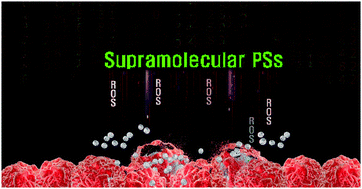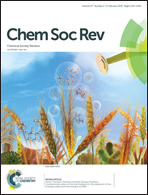Supramolecular photosensitizers rejuvenate photodynamic therapy
Abstract
Owing to its spatiotemporal selectivity and noninvasive nature, photodynamic therapy (PDT) has become a clinically promising approach for the treatment of a wide range of cancers and other diseases. However, the full potential of PDT has not been achieved thus far as a consequence of the lack of optimal photosensitizers (PSs) and/or smart transport/activation strategies. These problems, which unfortunately lie at the core of the PDT paradigm, include the oxygen reliance limits, the effect of PDT on hypoxic tumors, limitations of light penetration, and undesired skin photosensitization induced by “always on” PSs. Recently, supramolecular approaches, which rely on the use of non-covalent interactions to construct biomedical active materials, have become suitable methods for developing innovative PSs. Non-covalent interactions enable supramolecular PSs to have sensitive and controllable photoactivities, important elements needed to maximize photodynamic effects and minimize side effects. In addition, versatile supramolecular PS-assemblies can be designed so that PDT occurs synergistically with other therapeutic modalities, e.g., photothermal therapy, leading to a potential improvement of therapeutic effectiveness. In this review, recent progress made in the development of supramolecular PSs for rejuvenating PDT will be presented. Importantly, this discussion also provides a view of future advances that will likely be made in this area and their potential clinical applications.



 Please wait while we load your content...
Please wait while we load your content...